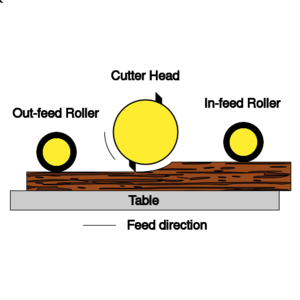Planers: Difference between revisions
From
No edit summary |
|||
| Line 42: | Line 42: | ||
=References= | =References= | ||
* [https://www.woodmastertools.com/shop/4-side-molder/model-4000-4-side-molder/ Model 4000 4-Side Planer/Molder] | * [https://www.woodmastertools.com/shop/4-side-molder/model-4000-4-side-molder/ Model 4000 4-Side Planer/Molder] | ||
* [https://www.woodpeck.com/woodpeckers-premium-router-package-prp-4.html Woodpeckers Super Fence | * [https://www.woodpeck.com/woodpeckers-premium-router-package-prp-4.html Woodpeckers Super Fence] | ||
* [https://en.wikipedia.org/wiki/Thickness_planer Wikipedia: Thickness planer] | * [https://en.wikipedia.org/wiki/Thickness_planer Wikipedia: Thickness planer] | ||
Latest revision as of 05:47, 28 September 2021
Project: Planers
| Designers: | Timothy Schmidt |
|---|---|
| Tools: | Wrenches |
| Parts: | Frames, Nuts, Bolts, Plates, End caps |
| Techniques: | Shelf joints, Tri joints |
Introduction
A thickness planer (also known in the UK and Australia as a thicknesser or in North America as a planer) is a woodworking machine to trim boards to a consistent thickness throughout their length and flat on both surfaces.
Challenges
Planers or thicknessers use a spinning blade or series of cutting tools to flatten a board to a desired thickness. Thicknessing wood can require a powerful motor and sharp tools moving quickly. Engineering a safer tool than commercial equivalents is a goal, but great care with respect to safety should be practiced around any such tool.
Approaches
Parts
- Dewalt portable planer
- Shelix helical carbide cutting head - shares tooling with lathe and mill
Interoperability
Development targets
- Replimat planer (frame, pillow block bearings, flat steel blades sharpened on grinder with replimat linear bearing attachment, motor, V wheels, sheet stock, hardware)
